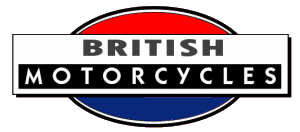

NOVEMBER 30th, 1922. Page 757
The Olympia Show.
RUDGE.
Stand 97.Popular on account of its liveliness, ease of steering and steadiness, the chain-driven Rudge has not undergone serious modifications for 1923. The alterations are an improved toolbag on the top tube, and a slight change in colour. Some improvement has also been made in the domed mudguards, which are now 6 in. across. Both the single and twin cylinder models will be available with a new four-speed gear box.
Worthy of note is the ingenious construction of the new sidecar chassis, which consists of a tubular hairpin, one side of which runs parallel with the centre line of the machine. The frame is very rigid owing to the construction of the rear axle, which is a straight tube with massive forgings at both ends. This axle may be easily unclipped and reversed so that the chassis may fit the other side of the machine.
EXCELSIOR.
Stand 98.Extending from a 147 c.c. Villiers-engined lightweight at £28 10s. to a 976 c.c. J.A.P.-engined sidecar outfit at £123, the Excelsior range of models caters for extreme tastes without reaching extremely high prices. In between are another Villiers model (247 c.c, £48), a 348 c.c. J.A.P. (£67), and a 349 c.c. Blackburne (£67).
The miniature is fitted with a plain two-speed gear box, the remaining two-stroke has the same ratios, but a clutch and kick-starter, and the larger machines have three-speed boxes with all-chain drive. For £3 7s. 6d. extra the 147 c.c. model may be fitted with a clutch and a lighting set.
RALEIGH.
Stand 99.One way in which the Raleigh engine differs from many others is that it has a scoop on the big end to pick up oil from the crank case. The chain-driven machine is of attractive appearance, and can be fitted with a 348 c.c. or 398 c.c. engine; for the latter a special sidecar and tradesman's carrier have been designed. An internal expanding rear brake of large diameter has been embodied.
The finish of the Raleigh is, of course, without reproach, while its performances in reliability trials at home and abroad are very much to the credit of its makers. Sixty-five m.p.h. is claimed for a sports model.
SUN.
Stand 100.Since the makers of Sun motor cycles have always specialised in lightweights, it is only natural that they should turn to meet the growing demand for workmanlike miniatures.
Absolutely the simplest lines are followed by the new ultra-lightweight (a two-stroke), but spring forks are fitted and pedalling gear is dispensed with.
HOBART.
Stand 101.No Hobart for next year will exceed 350 c.c, the exhibit consisting of five lightweights and two examples of a new miniature to be marketed at a very moderate price.
Three of the lightweights, 348 c.c. sports J.A.P., 348 c.c. touring J.A.P., and 349 c.c. Blackburne models, have final chain drive, 249 c.c. Blackburne and 293 c.c. J.A.P.-engined machines having chain-cum-belt transmission.
The miniature is a two-stroke, of the simplest description, which the makers anticipate will arouse great interest.
The Motor Cycle, November 1922
If you have a query about this page please contact us